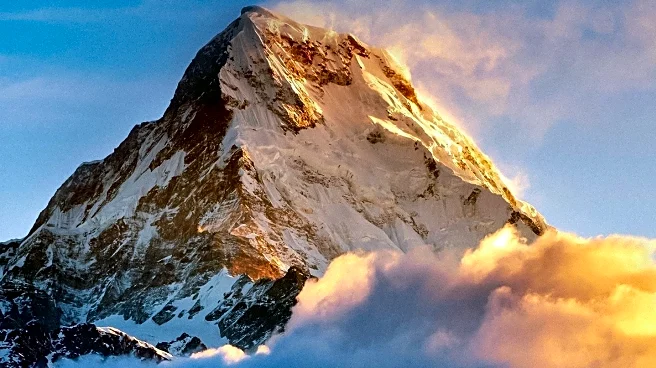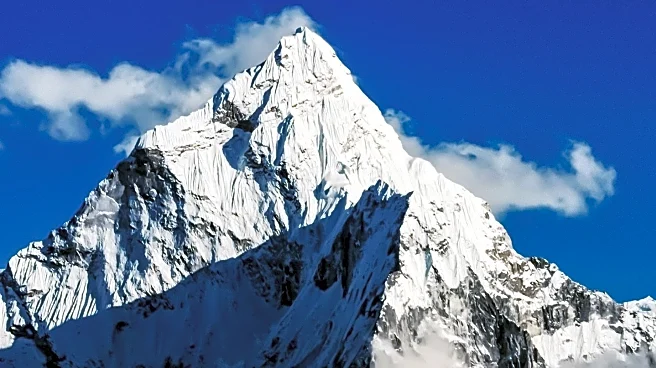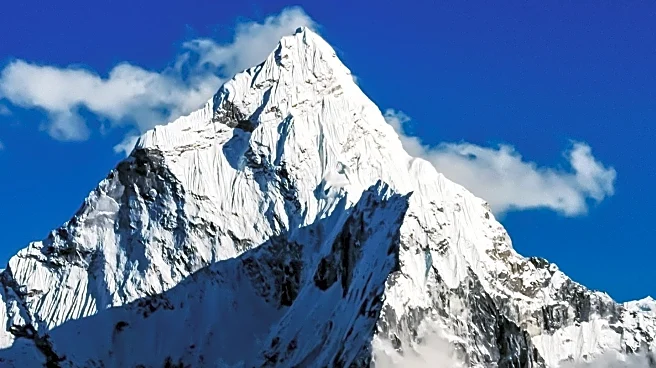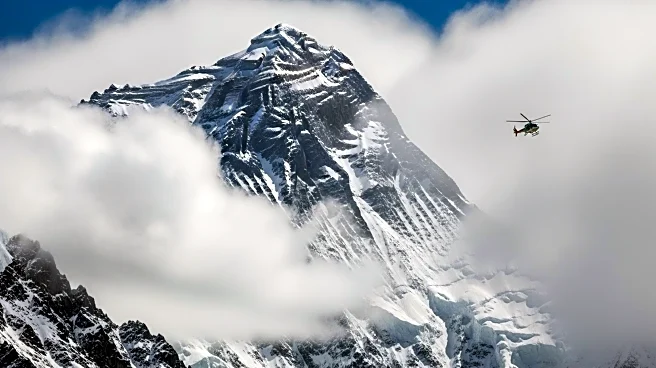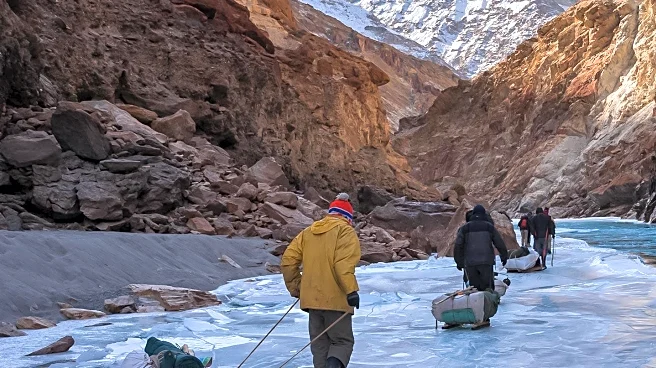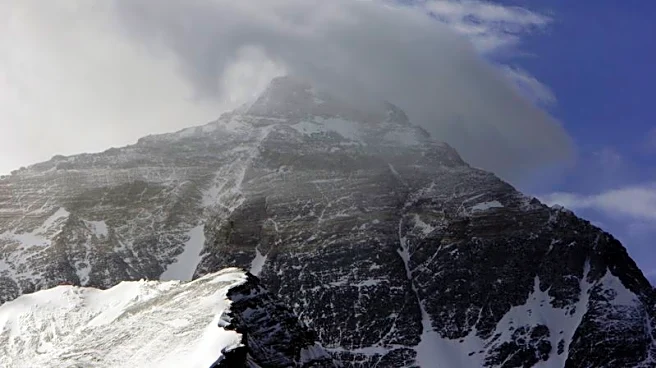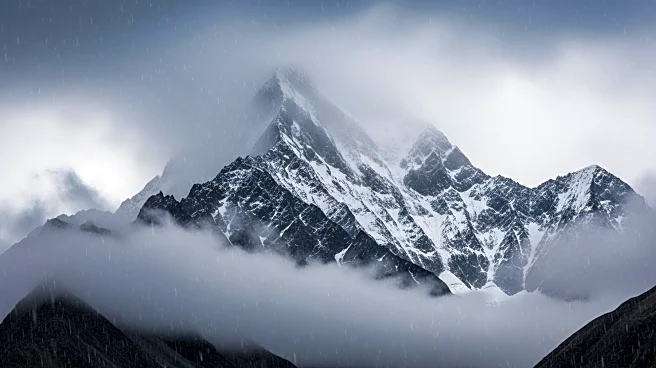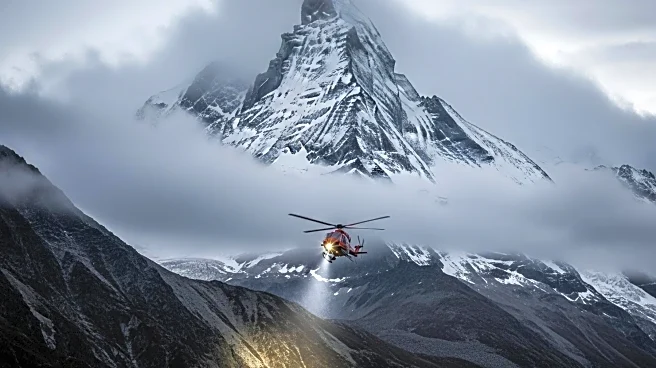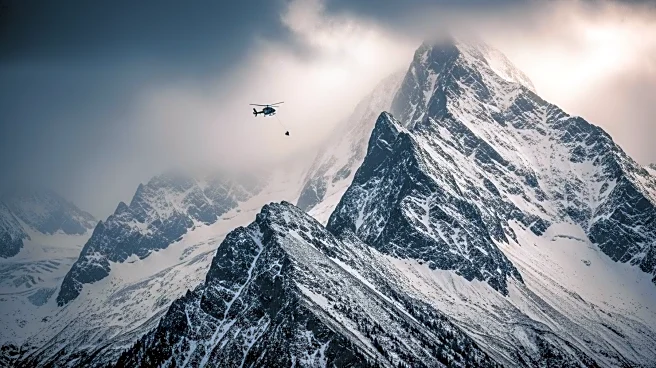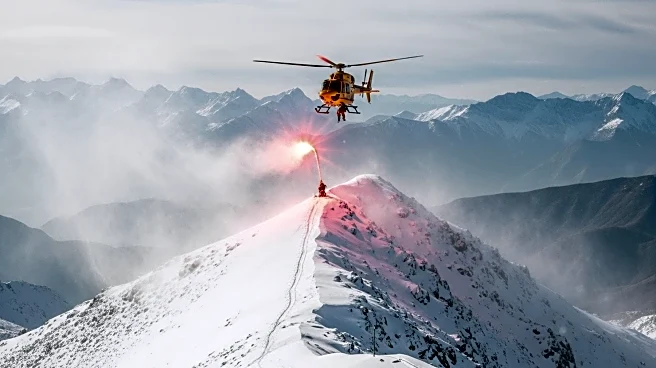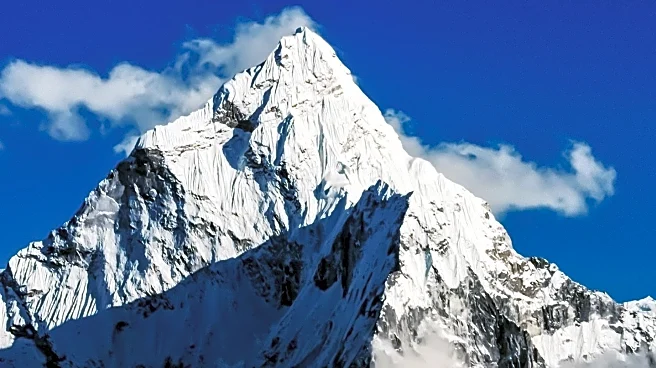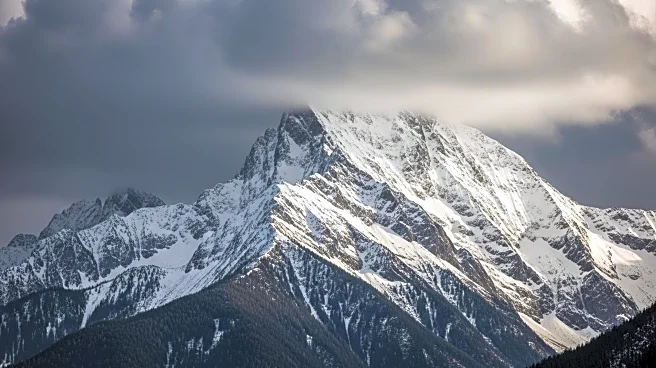What is the story about?
What's Happening?
Rescue operations have successfully evacuated hundreds of trekkers stranded near the eastern face of Mount Everest in Tibet due to a severe blizzard. The heavy snowfall began on Friday evening and continued through Saturday, affecting the remote valley of Karma, which leads to the eastern Kangshung face of Everest. As of Sunday, 350 trekkers had reached the township of Qudang, while contact with over 200 additional trekkers had been established. The rescue efforts were organized by local government authorities, deploying hundreds of local villagers and rescue teams to clear snow-blocked access routes. The situation arose during China's eight-day National Day holiday, which saw a significant influx of visitors to the area.
Why It's Important?
The successful rescue of trekkers from Mount Everest highlights the importance of coordinated emergency response efforts in remote and challenging environments. The heavy snowfall and subsequent rescue operations underscore the risks associated with trekking in high-altitude regions, particularly during adverse weather conditions. This event may prompt increased scrutiny on safety measures and emergency preparedness for trekking expeditions in the Himalayas. The incident also draws attention to the impact of extreme weather patterns on tourism and local communities, potentially influencing future travel advisories and policies in the region.
What's Next?
The remaining trekkers are expected to arrive in Qudang in stages under the guidance of rescue teams. Authorities may review and enhance safety protocols for trekking in the region, considering the unpredictable weather conditions. The suspension of ticket sales and entry to the Everest Scenic Area may continue until conditions improve. Local tourism companies and government agencies might collaborate to develop more robust emergency response strategies to prevent similar incidents in the future.
Beyond the Headlines
The incident raises questions about the sustainability and safety of high-altitude tourism, particularly in regions prone to extreme weather. It may lead to discussions on the ethical responsibilities of tour operators and local governments in ensuring the safety of visitors. Additionally, the event could influence cultural perceptions of adventure tourism, highlighting the balance between exploration and safety.
AI Generated Content
Do you find this article useful?
